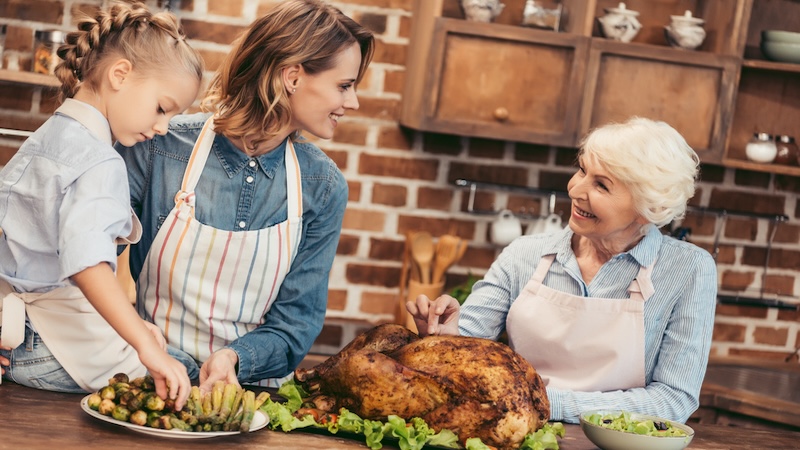The Art of Storytelling
Connect with the past, spread hope for the future

Storytelling nurtures hope and perspective, honors the present, acknowledges the past, and looks to the future, writes psychologist and author Diana Raab. She presents the Hawaiian tradition of Ka’ao and offers ideas for developing storytelling skills.
“There’s no greater agony than bearing an untold story inside of you.”
~ Maya Angelou
Storytelling dates back to the beginning of time. Its purpose is to share stories that unite human beings. Regardless of our culture, stories bring us together and bridge the gaps between us. They’re also tools for learning and exchanging ideas. Many of the strengths, preferences, and comfort zones relating to storytelling often harken back to the patterns of our childhoods.
Parents and grandparents play many roles in their children’s lives, but one of the most important one is of instilling a sense of hope and perspective. One way to do this is to through storytelling. Nurturing a sense of hope and perspective is about honoring the present, appreciating the past, and planning for the future. It’s also a way to be grateful for our blessings from both personally and spiritually.
My parents were first-generation immigrants and worked very long hours. Typically, our dinners were often rushed, with little opportunity for storytelling. As such, most of the stories I heard during my childhood were parts of conversations I overhead when my parents had guests. Since I’m an only child, I spent a lot of time reading and writing, and often found myself gravitating to friends and family members who were good storytellers, which is how I learned to be a good listener. Because I’d been a writer from a young age, my written storytelling skills were more effective than my oral ones.
For years I’d been drawn to the Hawaiian tradition of Ka’ao, or sharing wisdom through the art of storytelling. Kahunas teach and instruct in the form of story, which provides a vehicle for understanding life and relationships. Thus, the story becomes a form of philosophy. The ceremonies and rituals and the art of storytelling are inherent in the Hawaiian culture.
During my many sojourns in Hawaii and spending time with my kahuna, my oral storytelling skills quickly improved. I learned that it’s important to remember to put on your “story hat,” and to embody the feeling of a story when you’re telling it. Maybe I didn’t realize it at the time, but perhaps one subconscious reason I continually yearn to spend time in Hawaii is to improve my storytelling skills, and thus, connect in a more profound way with my fellow travelers on the life path.
Storytelling is the art of using narrative to convey a message. Some stories are true, and some are embellished to make them more compelling. Storytelling is important because stories influence, inspire, and instruct. They can teach present and future generations about cultures, influences, history, philosophy, and moral ethics. Good storytelling involves psychology, human emotions, and interests. It also provides us with a sense of perspective. Stories can be told verbally or in the written form, and some people are better storytellers than others.
Here are some keys to good storytelling:
- Keep it simple.
- Make sure there’s a good opening and conclusion.
- Be sure every element of the story is essential to it.
- Use vivid language.
- Insert a theme or moral into the story.
Storytelling happens in many situations, both public and personal. On a personal level, parents and grandparents play many roles in their children’s lives, but one of the most important is instilling them with a sense of hope and perspective. One of the best ways to do so is through storytelling. When we nurture a sense of hope and perspective, we honor the present while appreciating the past and planning for the future. Telling stories is also a way to bring loved ones together and a way to recount our blessings.
Diana Raab, PhD is a memoirist, poet, essayist, thought-leader, and speaker. She presents workshops in writing for healing and transformation. She has a PhD in Psychology with a concentration in Transpersonal Psychology with a research focus on the healing and transformative powers of memoir writing. Her educational background also includes health administration, nursing, and creative writing.
Raab is an award-winning author of 13 books, and her articles and poems have been published and anthologized worldwide. Her latest memoir, Hummingbird: Messages from My Ancestors, a memoir with reflection and writing prompts was released in January 2024.
You can learn more at her website, DianaRaab.com.
Read more essays, childhood memories, and other contributions from Boomer readers in our From the Reader department.
Have your own ideas like the art of storytelling that you’d like to share with our baby boomer audience? View our writers’ guidelines and e-mail our editor at Annie@BoomerMagazine.com with the subject line “‘From Our Readers’ inquiry.”



